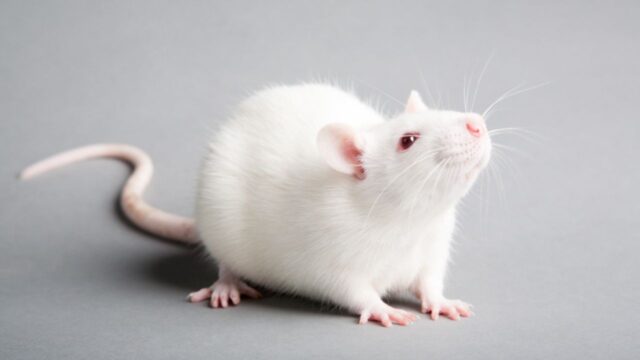Researchers at Howard Hughes Medical Institute’s Janelia Research Campus have made a groundbreaking discovery about the cognitive capacities of rats. Through an innovative “thought detector” system utilizing virtual reality and advanced brain-machine interface technology, the researchers found that rats are capable of imagination, concentration, and thinking deeply about objects and locations not in their immediate vicinity.
This challenges the long-held notion that imagination is a uniquely human trait separate from other animals. The state-of-the-art experiment allowed the researchers to delve into the realm of a rat’s inner thoughts and hippocampal activity patterns in real-time, unlocking surprising revelations about their sophisticated mental abilities.
The breakthrough research was conducted by an interdisciplinary team spanning the laboratories of Tim Harris and Albert Lee at Janelia Research Campus. Harris and Lee engineered a first-of-its-kind system fusing virtual reality with a brain-machine interface to peer directly into rats’ brains as they thought about spaces and objects.
Over nine years in development, this “thought detector” provides an unprecedented window into rats’ neural functioning and spatial cognition by translating their hippocampal activity patterns into discernible experiences within an interactive virtual environment. The results yield astonishing insights into imagination and cognition that force us to reconsider long-held assumptions about rats’ mental capacities.
Powerful Spatial Memory and Location Focus
The hippocampus region of the rat brain plays a pivotal role in their impressive spatial memory abilities and representation of locations in the environment. Through high-precision recordings of hippocampal activity during the virtual navigation tasks, the researchers found that rats can concentrate intently on a single spot for remarkably long periods.
This discovery counters the common perception that rats have limited attention spans and cannot focus on one place for an extended duration. But the rats reliably used voluntary thought patterns to ponder specific locations, demonstrating an ability to manipulate their own hippocampal activity that surpasses assumptions.
The results indicate that rats are capable of contemplating places and objects far beyond their immediate surroundings through internally generated experiences. By activating distinct neural patterns corresponding to remote locations, they can essentially daydream about places apart from their current position.
According to lead author Chongxi Lai, “The rat can indeed activate the representation of places in the environment without going there. Even if his physical body is fixed, his spatial thoughts can go to a very remote location.” The researchers believe this reveals that rats possess a form of imagination akin to humans. Additionally, you can also read about- 12 Bravest Animals Who Have Traveled to Space
To tap into the rats’ spatial cognition abilities, the researchers created virtual reality tasks in which the rats needed to navigate to target destinations purely through thought. In the “Jumper” task, the rats utilized precise hippocampal activity patterns to move themselves to rewards within the VR environment without any physical movement.
Similarly, in the “Jedi” task, they successfully learned to focus their neural activity to move a virtual object to specific goals, showcasing goal-oriented concentration. These remarkable displays prove rats can voluntarily control their thoughts over extended timeframes to accomplish objectives requiring imagination.
According to Albert Lee, “To imagine is one of the remarkable things that humans can do. Now we have found that animals can do it too, and we found a way to study it.” Their innovation opens up groundbreaking methods for exploring imagination scientifically across species.
Multi-Year Development of Pioneering Thought Translation System
The study’s origins trace back over nine years to when Lai was a graduate student under Harris and conceived the ambitious idea of creating a brain-machine interface to detect rats’ thoughts. Through an ingenious collaboration between the labs of Harris and Lee, the futuristic thought decoder gradually took shape.
Central to its development was quantitatively linking specific hippocampal activity signatures to corresponding locations in the virtual arena, creating an advanced “thought dictionary.” This enabled the team to “translate” the rats’ neural activity into actions in the VR environment in real-time with remarkable precision.
They utilized a spherical treadmill system in which the rats’ movements are mirrored on the surrounding screens through a digitally rendered avatar. While initially allowing the rats to control the avatar with the treadmill, the researchers progressed to a fully hands-off phase where the rats accomplished tasks solely by modulating their own hippocampal patterns.
You May Find Interest: The Big Bang Facts: 8 Amazing Things You Didn’t Know
Study Implications – Animal Cognition, Prosthetics and Ethics
The depth of concentration and imagination revealed in rats through this research has far-reaching implications that may reshape our understanding of animal intelligence. It also opens avenues for developing innovative neural prosthetics that could benefit humans based on the brain-machine interface techniques developed here.
On the scientific front, the ability to measure rats’ thoughts provides a new paradigm for studying animal cognition and hippocampal function. Ethically, it prompts questions about the treatment of rats in research and beyond in light of their newly spotlighted mental capabilities.
Overall, this pioneering research blows open existing notions about imagination as an exclusively human trait and underscores the impressiveness and complexity of cognition across species. Rats possess remarkable mental faculties that demand a reconsideration of their intelligence.






![How to Use ChatGPT? [A Complete Guide – Step by Step] How to Use ChatGPT?](https://techyfilm.com/wp-content/uploads/2023/06/How-to-Use-ChatGPT-100x75.jpg)










